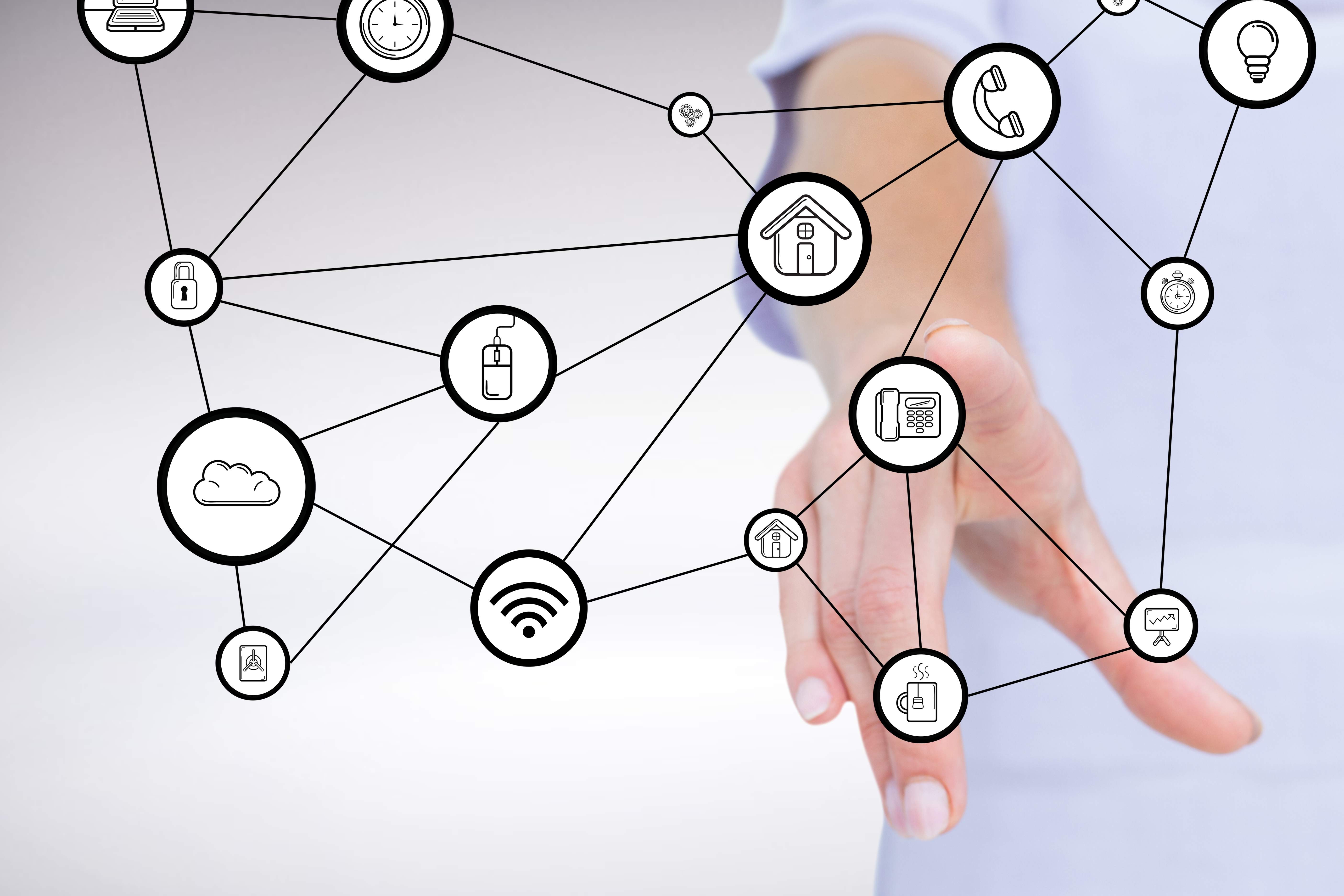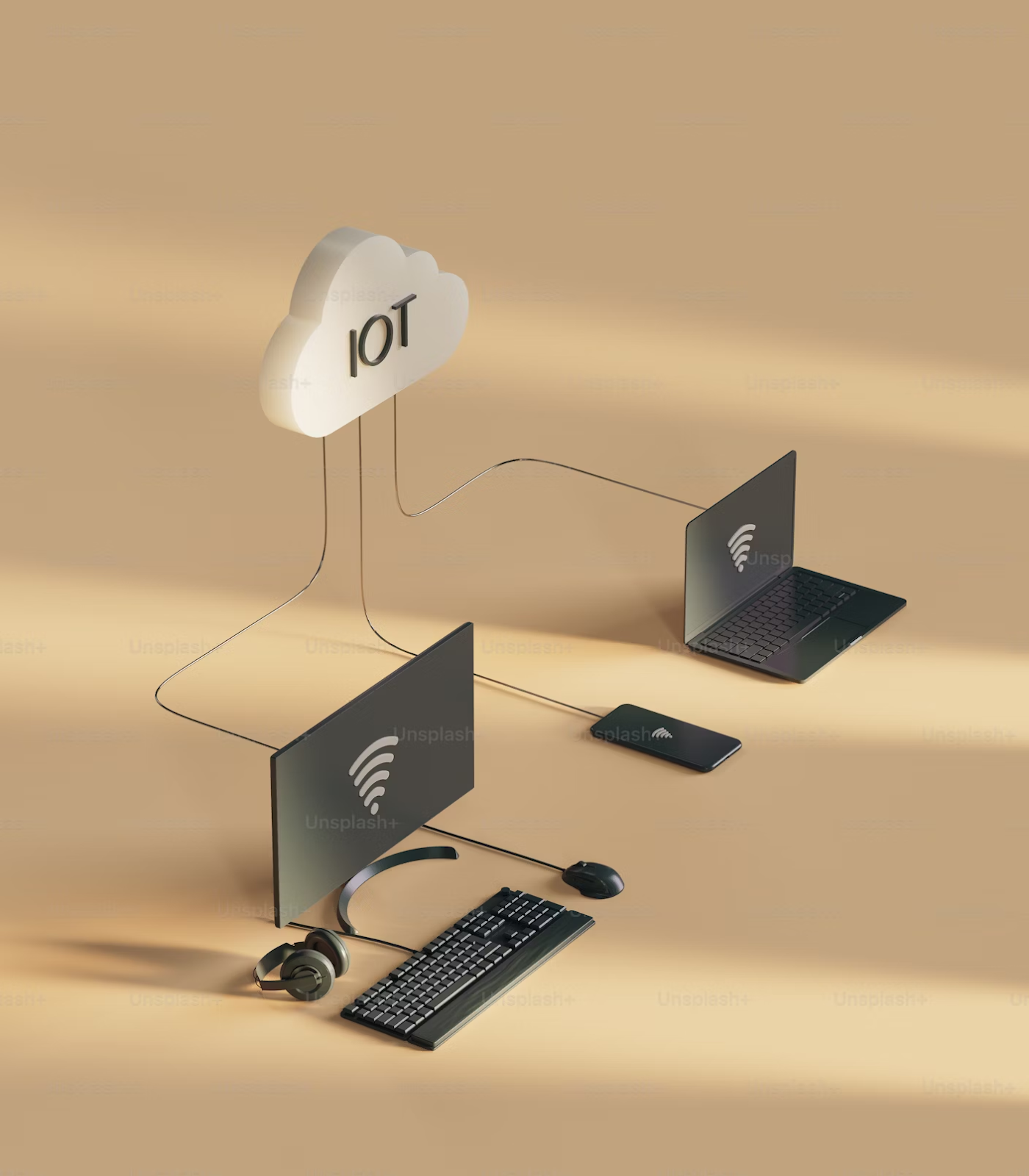IoT vs. WoT: Understanding the Key Difference Between Internet of Things and Web of Things
-
December 22, 2023
-
8 min read

As the world becomes increasingly connected, two terms often arise in discussions about smart devices and the future of the internet: the Internet of Things (IoT) and the Web of Things (WoT). While both involve connecting physical objects to the digital world, there are significant differences in their architectures, protocols, and use cases. Understanding the difference between WoT and IoT is crucial for businesses and developers looking to build scalable, interoperable solutions in today’s rapidly evolving technology landscape.
In this article, we’ll take a deep dive into the key differences between IoT and WoT, exploring their definitions, components, and how they work together to enable a more connected future. We’ll also examine real-world applications and the role of connectivity providers like Airtel in bridging the gap between these two paradigms.
What is the Internet of Things (IoT)?
The Internet of Things (IoT) refers to a network of physical devices, vehicles, home appliances, and other objects embedded with sensors, software, and connectivity, enabling them to collect and exchange data over the internet. The core components of an IoT system include:
- Sensors and actuators
- Connectivity modules (e.g., Wi-Fi, Bluetooth, cellular)
- Data processing units
- Cloud platforms for storage and analysis
- User interfaces (e.g., mobile apps, web dashboards)
How IoT Works: Devices, Connectivity & Data
In a typical IoT setup, sensors and actuators are embedded into physical objects, allowing them to collect data about their environment or perform actions based on received commands. These devices connect to the internet through various protocols, such as Wi-Fi, Bluetooth, or cellular networks, and transmit data to cloud platforms for storage and analysis.
The data flow in an IoT system can be summarised as:
Device → Gateway → Cloud/Server → User Application
IoT devices are often controlled through proprietary mobile apps or web interfaces, which allow users to monitor and manage them remotely.
Limitations in Traditional IoT Implementations
While IoT has revolutionised many industries, traditional implementations face several challenges:
- Interoperability issues due to diverse hardware and communication standards
- Scalability challenges when integrating new devices or protocols
- Security vulnerabilities arising from fragmented approaches and limited device resources
- High integration and maintenance costs, especially in large-scale deployments
These limitations have led to the emergence of the Web of Things (WoT) as an extension of IoT, aiming to address these concerns by applying web standards and technologies.
What is the Web of Things (WoT)?
The Web of Things (WoT) builds upon the foundation of IoT, extending it by applying web standards and technologies to enable seamless integration, interoperability, and accessibility of IoT devices and data. WoT does not replace IoT; instead, it provides a standardised, scalable, and interoperable framework for connecting disparate IoT systems and devices.
How WoT Bridges the Gap Using Web Standards
WoT aims to make IoT devices and data accessible through standard web technologies, such as HTTP, REST, JSON, and web APIs. By representing IoT devices as web resources with standardised interfaces (known as “Thing Descriptions”), WoT enables device discovery, control, and data exchange using familiar web protocols and tools.
This approach offers several advantages:
- Simplified integration by leveraging widely adopted web standards
- Enhanced interoperability across devices, platforms, and domains
- Improved scalability through uniform device onboarding and management
- Increased accessibility for developers and end-users via web browsers and applications
Key Technologies Behind WoT
WoT relies on several core web technologies to enable its functionality:
- REST (Representational State Transfer): An architectural style for designing networked applications, widely used in web APIs for stateless, scalable communication
- HTTP/HTTPS: The foundational protocols of the web, used by WoT for device communication and data exchange
- JSON/JSON-LD: Lightweight, machine-readable data formats used for Thing Descriptions and data payloads
- WebSockets: A protocol enabling real-time, bidirectional communication between devices and web applications
- Semantic metadata: Descriptive information about devices and their capabilities, enabling automated discovery and integration
By leveraging these established web standards, WoT simplifies the development and deployment of connected solutions while ensuring compatibility with existing web infrastructure.
IoT vs. WoT: A Detailed Comparison
Let’s compare IoT & WoT to understand how they differ:
Architecture & Protocol Differences
One of the key differences between IoT and WoT lies in their architectural approaches and protocols. Let’s see how:
| Aspect | IoT | WoT |
| Architecture | Device-specific, often proprietary | Web-based, using standard protocols and interfaces |
| Communication | Various protocols (MQTT, CoAP, Bluetooth, etc.) | HTTP, WebSockets, and other web standards |
| Device Representation | Proprietary, often requiring custom adapters | Standardised “Thing Descriptions” using JSON-LD |
| Integration | Complex, requiring protocol-specific gateways | Simplified through web APIs and protocol bindings |
Device Communication and Interoperability
In traditional IoT systems, devices often use proprietary or incompatible protocols, making integration and interoperability challenging. WoT addresses this by representing devices with standardised web interfaces (Thing Descriptions), making them discoverable and controllable via web APIs.
WoT’s protocol bindings translate between device-specific protocols and web standards, enabling devices from different vendors to work together seamlessly. This promotes horizontal interoperability and reduces the need for custom middleware or adapters.
Scalability, Integration, and Web Accessibility
Scalability is another area where the difference between IoT and WoT becomes apparent.
| Aspect | IoT | WoT |
| Scalability | Limited by protocol fragmentation and custom integrations | Designed for scalability through uniform device onboarding |
| Integration | Requires protocol-specific gateways and adapters | Simplified through web APIs and protocol bindings |
| Accessibility | Often limited to proprietary apps and interfaces | Accessible via web browsers and applications |
Use Cases and Real-World Applications of WoT
WoT’s interoperability and accessibility enable a wide range of applications across industries:
- Smart Cities: WoT allows the integration of traffic sensors, environmental monitors, and public infrastructure into unified web dashboards, accessible by city planners and citizens. This enables data-driven decision-making and improved urban services.
- Industrial Automation: In manufacturing and logistics, WoT simplifies the integration of sensors, robots, and control systems from multiple vendors. This improves operational efficiency, enables predictive maintenance, and facilitates data-driven optimisation.
- Healthcare: WoT enables secure, standardised access to patient monitoring devices, facilitating remote diagnostics, telemedicine, and personalised care. Interoperability between medical devices and health information systems is crucial for improving patient outcomes.
- Agriculture: WoT-enabled sensors and actuators can monitor soil conditions, automate irrigation, and optimise crop yields. By integrating data from multiple sources, farmers can make informed decisions and reduce resource consumption.
As WoT adoption grows, we can expect to see more innovative use cases that leverage the power of connected devices and web technologies to solve real-world challenges.
Future Outlook: What’s Next for IoT and WoT?
As IoT continues to evolve, the Web of Things is poised to play a crucial role in shaping its future. Some key trends and developments to watch include:
- Increased adoption of WoT standards: Major technology vendors, open-source communities, and industry consortia are increasingly embracing WoT standards, such as those developed by the W3C Web of Things Working Group. This will drive interoperability and accelerate innovation in the IoT space.
- Emergence of new business models: WoT’s open, web-based approach will enable new business models based on data sharing, API-driven services, and cross-domain collaborations. This will create opportunities for startups and established companies alike to develop innovative solutions that leverage IoT data in novel ways.
- Integration with AI and edge computing: As IoT devices generate vast amounts of data, the integration of WoT with artificial intelligence (AI) and edge computing will become increasingly important. This will enable real-time analytics, intelligent automation, and decentralised decision-making at the edge of the network.
- Enhanced security and privacy: As WoT adoption grows, there will be a greater emphasis on ensuring the security and privacy of connected devices and data. The use of web standards, such as HTTPS and OAuth, will help address these concerns, but ongoing efforts will be needed to keep pace with evolving threats.
- Convergence with other technologies: WoT will likely converge with other emerging technologies, such as 5G networks, blockchain, and augmented reality, to enable new applications and services. This convergence will create a more seamless, immersive, and trustworthy IoT ecosystem.
As these trends unfold, businesses and developers will need to stay informed about the latest developments in WoT and adapt their strategies accordingly. Partnering with experienced connectivity providers, such as Airtel IoT, can help organisations navigate this evolving landscape and unlock the full potential of the Web of Things.
Ready to Start Your Connected Journey? Choose Airtel IoT
Airtel IoT connectivity management platform is a comprehensive platform that offers secure, reliable, and scalable connectivity solutions for businesses looking to harness the power of the Internet of Things. With a wide range of connectivity options, including 5G, NB-IoT, and LTE-M, Airtel IoT enables enterprises to connect millions of devices across industries, from automotive and healthcare to manufacturing and utilities.
By leveraging Airtel’s extensive network infrastructure and expertise in IoT deployments, businesses can quickly and efficiently launch connected solutions that drive operational efficiency, improve customer experiences, and unlock new revenue streams. Airtel IoT’s platform also offers advanced features, such as device management, data analytics, and edge computing capabilities, making it easier for organisations to manage and derive insights from their IoT data.
As the IoT and WoT landscape continues to evolve, partnering with a trusted connectivity provider like Airtel IoT can help businesses stay ahead of the curve and capitalise on the opportunities presented by a more connected, web-enabled future.
 Share
Share









